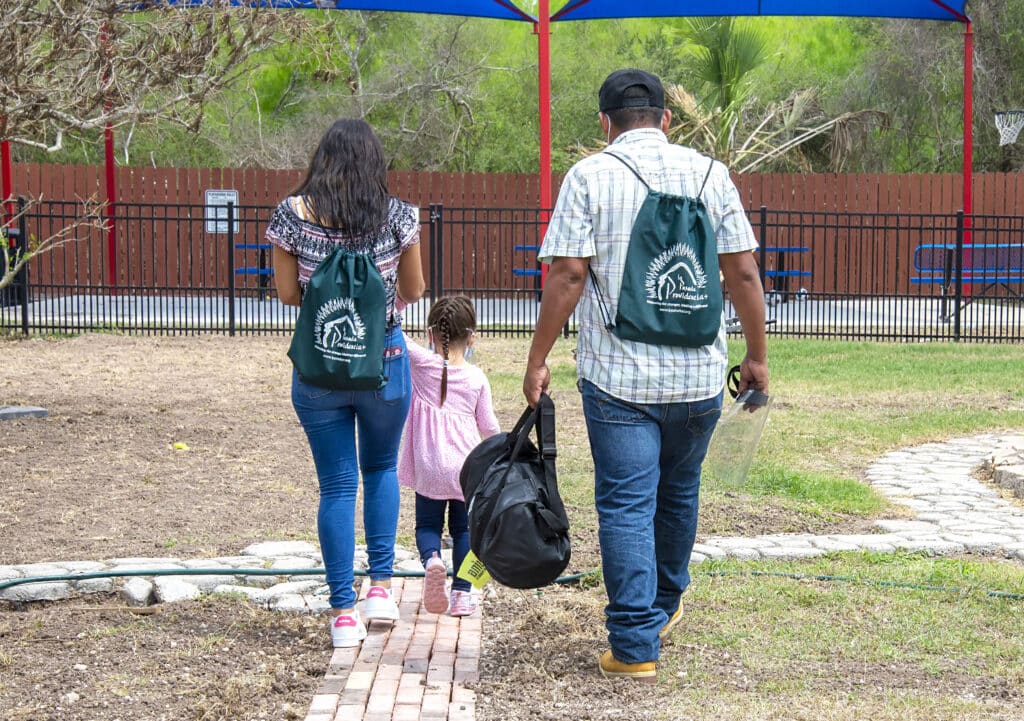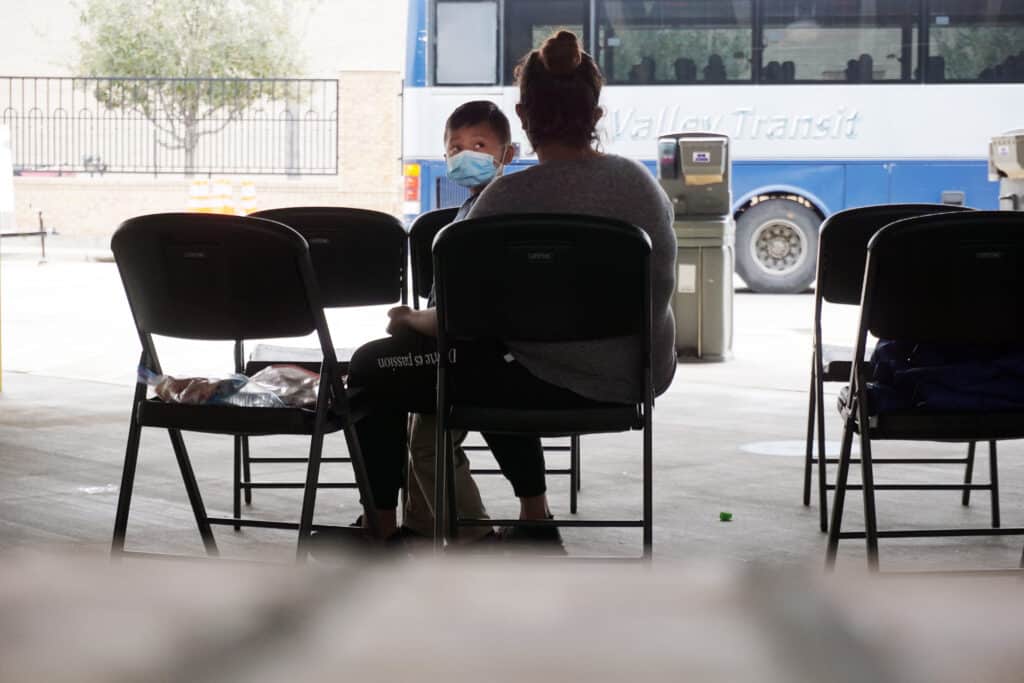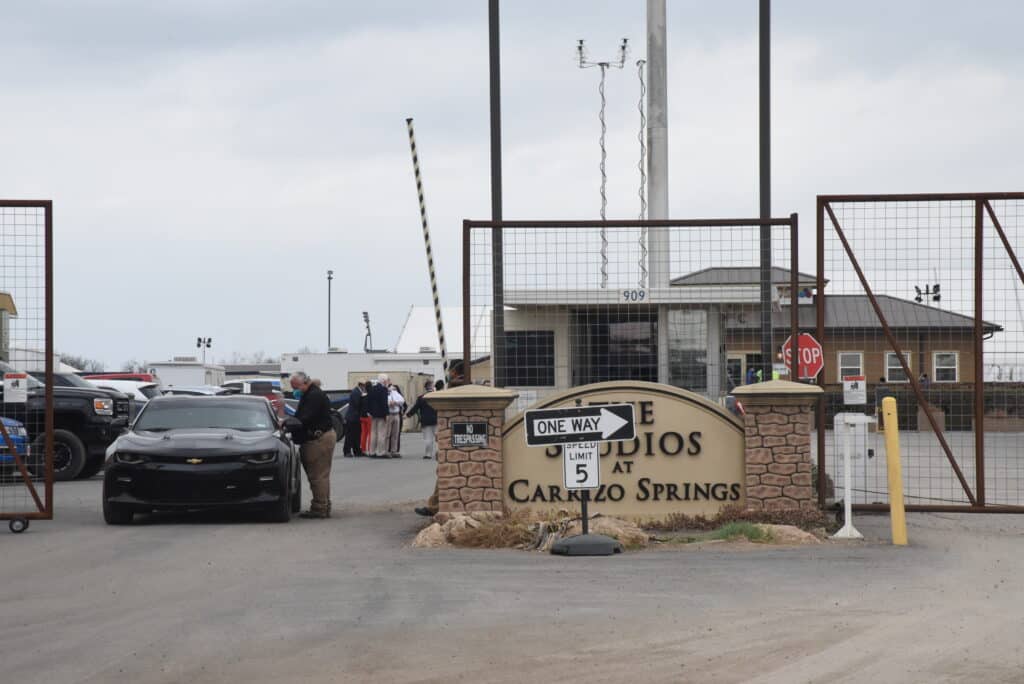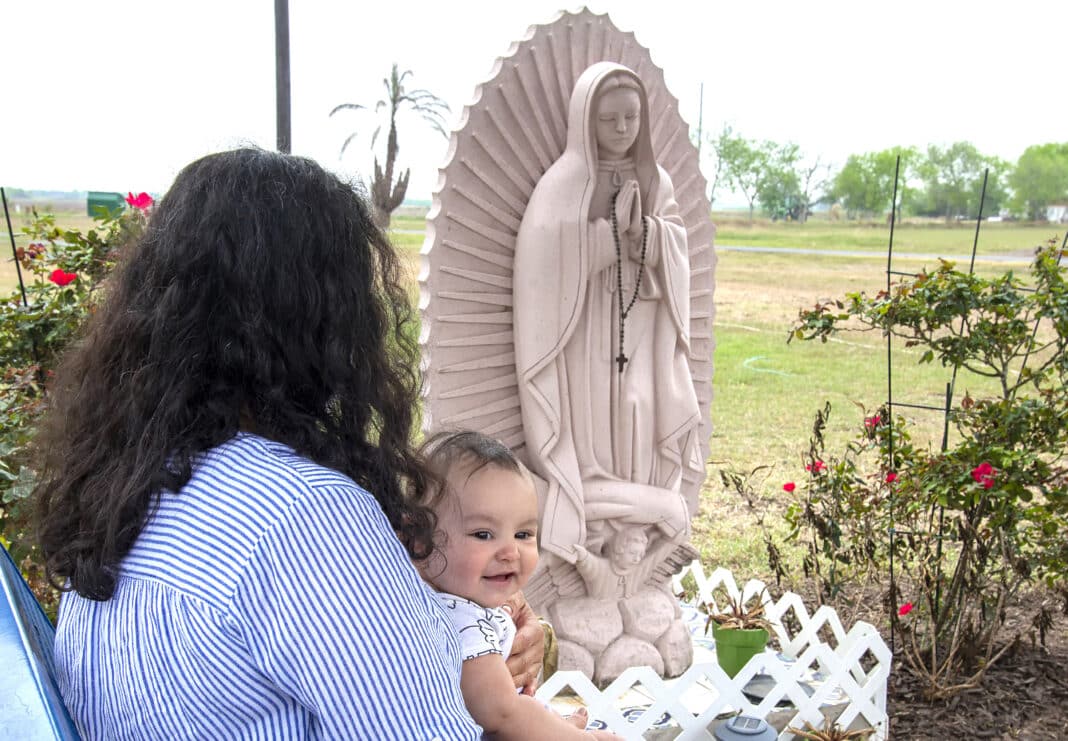MCALLEN — Federal officials are allowing Central American migrants to enter the United States to seek asylum after waiting two years in Reynosa, human rights groups said Wednesday.
On Tuesday, authorities began allowing the migrants from Honduras, Guatemala and El Salvador to cross the U.S. border south of here after former President Donald Trump refused them entry in January 2019, Magna Bolland, executive director of La Posada Providencia in San Benito, said, adding she didn’t know the number of migrants who have been waiting in Reynosa.
After receiving the first group, Catholic Charities of the Rio Grande Valley tested about 1,000 migrants for the coronavirus, Melissa Gutierrez, office manager for Loaves and Fishes in Harlingen, said, adding she didn’t know the test results.
In McAllen, the city’s emergency management department has provided Catholic Charities with 6,000 COVID-19 test kits, city spokeswoman Xochitl Mora said.
On Tuesday night, Catholic Charities, which can shelter about 600 migrants a day, made room for 602, Bolland said.
Now, Catholics Charities is waiting to receive 200 migrants a day, she said.
“They did not say for how long,” Bolland said, referring to the Reynosa influx. “They were going to need help with transportation.”
Shelters ready to make room for overflow
In Harlingen and San Benito, Loaves and Fishes and La Posada are ready to shelter migrants if Catholic Charities can’t make room for them.
“If there’s an overflow in McAllen or Brownsville, they know they can send them our way,” Gutierrez said.
On Monday, Loaves and Fishes sheltered seven Central American migrants including two men, each traveling with a child, and a woman, all of whom had tested negative for COVID-19, she said, adding the shelter could make room for as many as 40 migrants.
As part of an agreement with the city of Harlingen, the agency can move as many as 500 migrants into the city’s community center on Madison Avenue, she said,
Last month, city commissioners set aside $50,000 to help Loaves and Fishes feed, shelter and transport migrants while giving City Manager Dan Serna authority to give the agency an additional $25,000 through the end of the year.

In San Benito, La Posada sheltered 127 Central American migrants from March 1 to 19, Bolland said, adding all had tested negative for COVID 19.
After their short stays, migrants’ family members help them catch buses and planes as they make their way into the United States to await immigration court hearings on their asylum claims.
Migrants’ asylum claims
In Harlingen, attorney Jodie Goodwin said Central Americans’ asylum claims include fear of persecution.
“There are certainly people fleeing because of gang violence and gang control,” Goodwin, who has handled immigration cases for years, said. “There are also people who flee because of different religious persecution, persecution based on gender and social group status and people who flee because of natural disasters.”
Border Patrol coordinating migrant releases amid pandemic
Amid the threat of the coronavirus’ spread, U.S. Border Patrol officials are working to better coordinate migrants’ release with area cities, shelters and attorneys, Goodwin said.
“It’s definitely better coordinated,” she said. “We meet daily to coordinate. We’ve been able to coordinate a lot better with the Border Patrol so that these individuals can be tested after they’re dropped off.”
Border Patrol officials are regularly holding videoconferences to coordinate migrants’ releases, Bolland said.
“The pandemic has led to more communication and coordination between agencies,” she said. “The Border Patrol approached the (shelters) and the cities to coordinate. They share the numbers of people they’re apprehending and how many they need to release on a daily basis.”
From the Valley, the Border Patrol is busing migrants to Laredo while flying them to El Paso, Bolland said.
“I think, in part, it’s due to COVID because we’re all mindful to avoid infections in the community,” she said. “They’re working very hard to avoid people needing shelters and that means moving them along quickly. Most people who arrive leave the same day.”

Migrants leave Matamoros camp
In February, federal officials began allowing Central American migrants to enter the United States after staying in Matamoros camps for two years.
Earlier this month, the last group of migrants left the Matamoros camps.
Since February, officials were allowing 100 migrants to cross the border daily, Felipe Romero, the city of Brownsville’s spokesman, said.
In Matamoros, a non-profit group was testing the migrants for COVID-19 before they were allowed to the cross the border, he said.
Meanwhile, the Border Patrol has been releasing Central American migrants arrested after crossing the U.S.-Mexico border.
During the last week of February and the first week of March, the Border Patrol released about 1,825 Central American migrants at the Brownsville bus station, where the city’s emergency management officials found about 141 testing positive for the coronavirus, Romero said, adding the emergency management department was funding the cost of COVID-19 rapid-test kits.
Valley main migrant corridor
Across the U.S.-Mexico border, the Rio Grande Valley remains the main corridor for Central American migrants crossing the border.
Since last year, the numbers of migrants crossing the border have about doubled, Border Patrol statistics show.
From October through February, agents arrested 11,242 migrant children traveling without parents or guardians in the region compared with 5,242 last year, statistics show.
During the same period, Border Patrol agents arrested 16,583 family units in the area compared with 8,129 last year.
Meanwhile, agents arrested 69,283 migrants traveling alone in the area, compared with 25,933 the year before.
While U.S. Immigration and Customs Enforcement has tested migrants for COVID-19 since the coronavirus’ outbreak last year, Border Patrol officials have told human rights groups the agency doesn’t have “resources” to test arrested migrants before their release, Bolland said.
“They did not have enough time, capacity or resources,” she said.

Shelters opening to house migrant children
Meanwhile, the federal Office of Refugee Resettlement is moving migrant children detained while traveling without parents or guardians into shelters in areas such as Pecos, Carrizo Springs, Midland and San Diego, Calif.
On March 17, the department held 9,500 children, officials stated.
In the Raymondville area, a shelter was housing about 300 migrant children, Raymondville Mayor Gilbert Gonzales said Wednesday.
In Cameron County, non-profit groups under federal contracts to house migrant children include Southwest Key, BCFS and Comprehensive Health Services.




